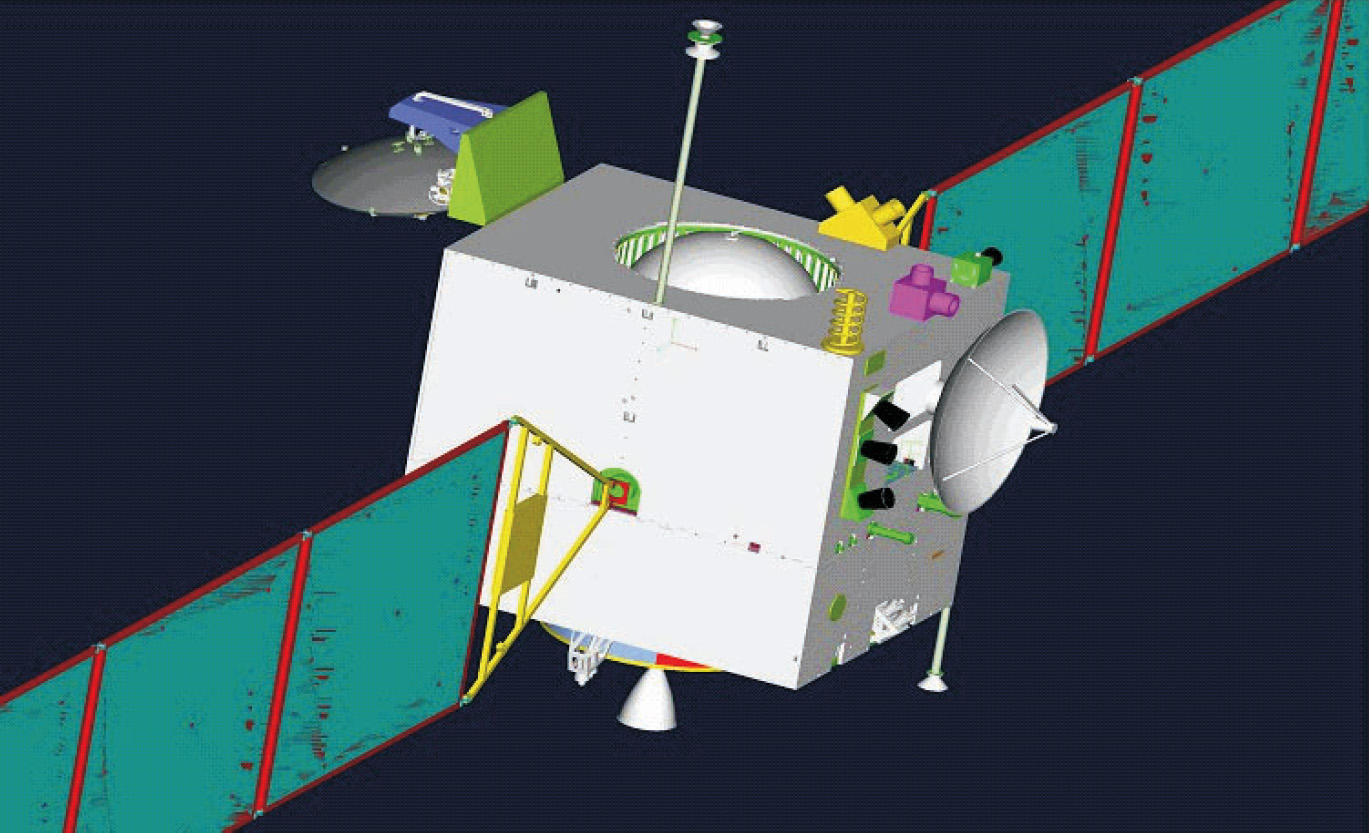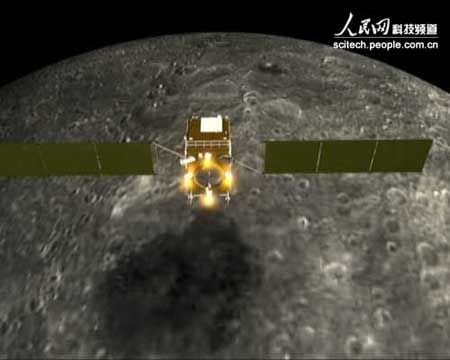Chang'e 1
Chang'e -1 (Chinese嫦娥 一号, Pinyin Chang'e YIHAO ) was the first spacecraft of the China National Space Administration ( CNSA ) and the first planned by at least three missions in the lunar program of the People's Republic of China. The probe was launched on 24 October 2007, reached on 5 November 2007 into an orbit around the moon and hit 1 March 2009 targeted at the moon on. With their technologies were tested for future missions as well as studying the nature of the lunar surface and the rock. The cost of the probe were estimated at 169 million U.S. dollars. Another mission was followed by 2010, the lunar orbiter Chang'e -2 and 2013 for a soft landing with Chang'e - third
The program was named after the moon goddess Chang'e. She turns up in a Chinese fairy tale in which a young fairy flying to the moon.
History
In January 2006 it was announced by the Government of the People's Republic of China that the production of the spacecraft and its booster rocket had started, then began the test phase of the satellite on 25 July 2006. In December 2006, the satellite has been tested in the Start Center.
Equipment and payload
The orbiter was based on a construction of the DFH -3 communications satellite. The total mass was 2350 kg, of which 130 kg was attributable to several scientific equipment:
- A stereo camera system for three-dimensional mapping of the lunar surface.
- A laser altimeter to determine the distance between the satellite and the lunar surface.
- An imaging spectrometer or interferometer.
- A Gamma-/Röntgenspektrometer to study the composition of the rock and the radioactive components on the moon, such as the analysis of at least 14 mineral elements as well as titanium and helium.
- A microwave radiometer for measuring the temperature of the lunar surface and to evaluate the density of the lunar dust.
- A device for collecting data of the solar wind in the lunar near- region.
Data transmission to Earth
Mission control was carried out with the help of four radio telescopes, with diameters between 25 and 50 meters. At the observatory of the most important, on the Sheshan Hill in Songjiang, a district in Shanghai, the data were also collected and analyzed. The other telescopes working in Beijing, Kunming and Urumqi with. For the entry of the probe into the lunar orbit mission control was additionally supported by the ESTRACK stations of ESA in Maspalomas ( Spain), Kourou (French Guiana ), and New Norcia (Australia).
Mission History
Chang'e -1 was launched on 24 October 2007 at 10:05 UTC with a launcher of the type CZ -3A from the Chinese Xichang Cosmodrome. She went on a Earth orbit with an orbital period of 16 hours and opened their solar panels. The next day she picked up on schedule by a short ignition of its own engines to the perigee of its orbit from 200 km to 600 km altitude. Single second seven days made three more orbit transfers, in which the probe was transported to an ever higher orbit to eventually orbit as far as to extend a so-called " earth-moon transfer " that the moon could be achieved.
After minor trajectory correction maneuvers, the probe was on November 5, when she was only 300 kilometers away from the moon to begin the decisive maneuver and engage in a lunar orbit. After two more braking maneuvers to Chang'e -1 was on November 6, on a lunar orbit with an altitude 213-1700 km and an orbital period of three and a half hours. On 7 November, she reached for a third braking maneuver their final track on which they orbited the moon in 200 km altitude once in 127 minutes. From this circular path she started from the commitment of all instruments on board and all four Chinese radio telescopes on Earth, their research program.
On 26 November, the CNSA presented to the public a first lunar receiving the probe. Chinese Premier Wen Jiabao unveiled at the Beijing control center, a composite of 16 individual photographs image.
On March 1, 2009 struck Chang'e -1 specifically at 09:13 GMT clock at the moon on.
Follow-up missions
The replacement of probe Chang'e -1 has been upgraded and now has a CCD camera with higher resolution. Under the name Chang'e -2 probe in October 2010 is started. The lunar orbit should be lower than that of Chang'e -1. Contrast, Chang'e - 3 consists of a lunar lander and rover. The launch took place on 1 December 2013.









